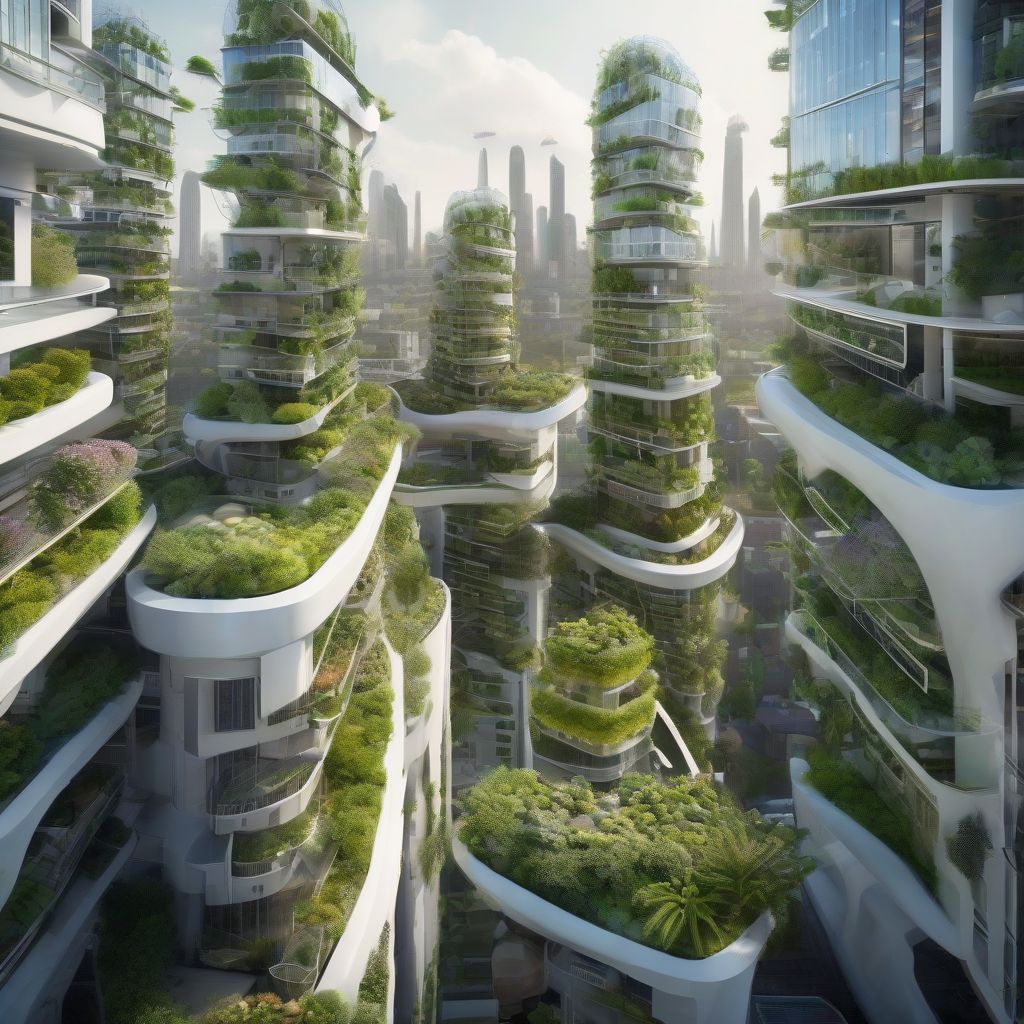Imagine a world where buildings don’t just shelter us but also work in harmony with the environment. That’s the vision driving the latest trends in green building technology. These innovations aren’t just about being eco-friendly; they’re about creating healthier, more efficient, and ultimately more sustainable spaces for us to live, work, and thrive.
Beyond LEED: The Evolution of Green Building
For years, LEED certification has been the gold standard in green building, and while it remains incredibly important, the industry is evolving rapidly. We’re seeing a move towards a more holistic approach, one that considers the entire lifecycle of a building, from the materials used in construction to the energy consumed during its operation and even its eventual deconstruction.
1. Embodied Carbon: Tackling the Footprint of Construction
Did you know that buildings and construction account for a staggering 39% of global energy-related carbon emissions? That’s a big slice of the pie! One of the most exciting trends is the focus on reducing embodied carbon – the emissions associated with the manufacturing, transportation, and installation of building materials.
Think of it like this: even the greenest building still has a carbon footprint from its creation. Here’s how the industry is tackling this:
- Mass Timber Construction: Move over steel and concrete, there’s a new kid on the block. Mass timber utilizes sustainably sourced wood (think large structural panels and beams) that actually sequester carbon dioxide, effectively turning buildings into carbon sinks.
- Bio-Based Materials: From mycelium insulation (grown from fungi!) to bricks made from recycled plastic, innovative materials are emerging that offer lower carbon footprints and often superior performance compared to traditional options.
2. Smart Buildings: Where Technology Meets Sustainability
The Internet of Things (IoT) is revolutionizing how we interact with our homes, and now it’s transforming commercial buildings too. Smart building technology is all about optimizing efficiency and comfort using interconnected sensors, data analysis, and automation. Here are some key trends:
- Predictive Maintenance: Imagine a building that can tell you when its systems need attention. Smart sensors can monitor everything from HVAC performance to lighting usage, predicting potential issues before they become costly problems.
- Occupancy-Based Controls: No more wasting energy on empty rooms! Occupancy sensors automatically adjust lighting, temperature, and ventilation based on real-time use, leading to significant energy savings.
3. Renewable Energy Integration: Powering Buildings with Nature
Green buildings aren’t just about reducing energy consumption; they’re also becoming increasingly energy-independent. Integrating renewable energy sources is no longer a novelty; it’s becoming the norm:
- Solar Integration: Rooftop solar panels are becoming ubiquitous, and advancements in building-integrated photovoltaics (BIPV) mean solar technology can now be seamlessly incorporated into windows, facades, and even roof tiles.
- Geothermal Heating and Cooling: Tapping into the constant temperature of the earth is an incredibly efficient way to heat and cool buildings. While installation costs can be higher upfront, the long-term energy savings and reduced environmental impact are significant.
4. Circular Economy Principles: Designing for Disassembly
Traditionally, buildings were designed with little thought given to what would happen at the end of their lifespan. The circular economy is changing that by promoting strategies that minimize waste and maximize the reuse and recycling of materials.
- Design for Disassembly (DfD): Imagine buildings constructed like giant Lego sets, with components easily disassembled and reused in new construction projects. DfD prioritizes modularity and connections that can be easily undone, reducing demolition waste and the need for virgin materials.
- Material Passports: What if buildings came with a list of all the materials used in their construction, like a nutritional label? Material passports are digital databases that track the components of a building, facilitating future recycling and reuse efforts.
 Green Building Cityscape
Green Building Cityscape
[amazon bestseller=”sustainable building materials”]
The Future is Green: Why This Matters for Everyone
These advancements in green building technology aren’t just about creating impressive structures; they have far-reaching benefits for all of us:
- Environmental Stewardship: By reducing carbon emissions, conserving resources, and minimizing waste, green buildings are crucial in the fight against climate change and environmental degradation.
- Healthier Indoor Environments: Green buildings often feature improved indoor air quality, access to natural light, and the use of non-toxic materials, all of which contribute to the well-being and productivity of occupants.
- Economic Benefits: While initial construction costs may be higher, green buildings offer significant long-term savings through reduced energy and water consumption, lower maintenance costs, and increased property values.
Building a Brighter Future, One Sustainable Structure at a Time
The latest trends in green building technology offer a glimpse into a future where our built environment exists in harmony with the natural world. By embracing innovation, prioritizing sustainability, and adopting a holistic approach to design and construction, we can create a world where buildings are not only beautiful and functional but also contribute to a healthier, more sustainable future for generations to come. What steps will you take to be a part of this green building revolution? Share your thoughts and ideas in the comments below!
